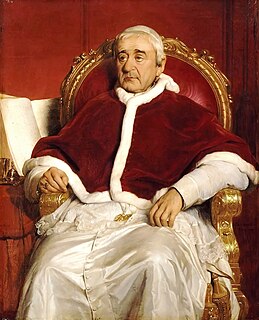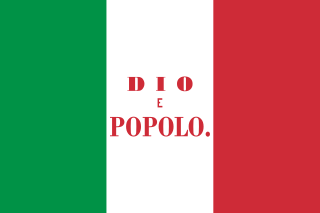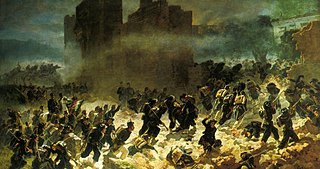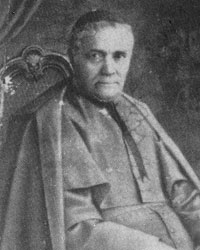History
They constituted a society whose statutes were confirmed approbatio [1] within a July 5 brief of Leo XIII during 1878.
It bound its members to refute false statements of enemies of the Church, whether derived from distortions of history, jurisprudence, or dogma, but above all were they to devote their legal knowledge to a defense of the Church's rights before civil tribunals. The society was formed in 1877, on the occasion of the Golden Episcopal Jubilee of Pope Pius IX, and the Advocate Count Cajetan Agnelli dei Malherbi, of Rome, became its first president. The ordinary members were jurists, but the society also enrolled as honorary members distinguished ecclesiastics or laymen who have made it a practice to defend Church interests along the lines of this organization.
Pope Pius IX warmly approved of the undertaking and desired a wide extension of the society.
The society spread rapidly over the Catholic world, and branches of the society were found in many countries. Colleges of the Advocates of Saint Peter, numbering many hundred members, existed in Italy, England, Austria, France, Spain, Germany, Canada and South America. All of their bodies were affiliated to the directory in Rome.
The body was transformed into a chivalric order, with France as its center. Then abuses crept in. Pope Pius X ordered an inquiry, which resulted in the Pope's decision to suppress the association in August 1909, stating that it no longer responded to the needs of the times. [2]

Pope John XXIII was head of the Catholic Church and sovereign of the Vatican City State from 28 October 1958 until his death in 1963. Angelo Giuseppe Roncalli was one of thirteen children born to a family of sharecroppers who lived in a village in Lombardy. He was ordained to the priesthood on 10 August 1904 and served in a number of posts, as nuncio in France and a delegate to Bulgaria, Greece and Turkey. In a consistory on 12 January 1953 Pope Pius XII made Roncalli a cardinal as the Cardinal-Priest of Santa Prisca in addition to naming him as the Patriarch of Venice. Roncalli was unexpectedly elected pope on 28 October 1958 at age 76 after 11 ballots. Pope John XXIII surprised those who expected him to be a caretaker pope by calling the historic Second Vatican Council (1962–1965), the first session opening on 11 October 1962.

Pope Pius VI was head of the Catholic Church and ruler of the Papal States from 15 February 1775 to his death in 1799.

Pope Leo XIII was the head of the Catholic Church from 20 February 1878 to his death in 1903. He was the oldest pope, with the exception of Pope Benedict XVI as emeritus pope, and had the third-longest confirmed pontificate, behind those of Pius IX and John Paul II.

Pope Pius IX was head of the Catholic Church from 1846 to 1878, the longest verified papal reign. He was notable for convoking the First Vatican Council in 1868 and for permanently losing control of the Papal States in 1870 to the Kingdom of Italy. Thereafter he refused to leave Vatican City, declaring himself a "prisoner of the Vatican".

Pope Pius X was head of the Catholic Church as Pope from August 1903 to his death in 1914. Pius X is known for vigorously opposing modernist interpretations of Catholic doctrine, promoting liturgical reforms and scholastic philosophy and theology. He initiated the preparation of the 1917 Code of Canon Law, the first comprehensive and systemic work of its kind. He is venerated as a saint in the Catholic Church and is the namesake of the Society of Saint Pius X.

Pope Gregory XVI was head of the Catholic Church and ruler of the Papal States from 2 February 1831 to his death in 1846. He had adopted the name Mauro upon entering the religious order of the Camaldolese.

Pope Pius VII, born Barnaba Niccolò Maria Luigi Chiaramonti, was head of the Catholic Church and ruler of the Papal States from 14 March 1800 to his death in 1823. Chiaramonti was also a monk of the Order of Saint Benedict in addition to being a well-known theologian and bishop.

The Roman Republic was a short-lived state declared on 9 February 1849, when the government of the Papal States was temporarily replaced by a republican government due to Pope Pius IX's flight to Gaeta. The republic was led by Carlo Armellini, Giuseppe Mazzini, and Aurelio Saffi. Together they formed a triumvirate, a reflection of a form of government in the ancient Roman Republic.

A prisoner in the Vatican or prisoner of the Vatican is how the Pope was described from the capture of Rome by the armed forces of the Kingdom of Italy “Romans” on 20 September 1870 until the Lateran Treaty of 11 February 1929. Part of the process of Italian unification, the city's capture ended the millennium-old temporal rule of the popes over central Italy and allowed Rome to be designated the capital of the new nation. Although the Italians did not occupy the territories of Vatican Hill delimited by the Leonine walls and offered the creation of a city-state in the area, the Popes from Pius IX to Pius XI refused the proposal and described themselves as prisoners of the new Italian state.

The 1878 papal conclave, which resulted from the death of Pope Pius IX on 7 February 1878, met from 18 to 20 February. The conclave followed the longest reign of any other pope since Saint Peter. It was the first election of a pope who would not rule the Papal States. It was the first to meet in the Apostolic Palace in the Vatican because the venue used earlier in the 19th century, the Quirinal Palace, was now the palace of the King of Italy, Umberto I.

The history of the Catholic Church is integral to the history of Christianity as a whole. It is also, according to church historian, Mark A. Noll, the "world's oldest continuously functioning international institution." This article covers a period of just under two thousand years

The Capture of Rome on September 20, 1870, was the final event of the long process of Italian unification also known as the Risorgimento, marking both the final defeat of the Papal States under Pope Pius IX and the unification of the Italian peninsula under King Victor Emmanuel II of the House of Savoy.

The Roman Colleges, also referred to as the Pontifical Colleges in Rome, are institutions established and maintained in Rome for the education of future ecclesiastics of the Roman Catholic Church. Traditionally many were for students of a particular nationality. The colleges are halls of residence in which the students follow the usual seminary exercises of piety, study in private, and review the subjects treated in class. In some colleges there are special courses of instruction but the regular courses in philosophy and theology are given in a few large central institutions, such as Pontifical Urbaniana University, the Pontifical Gregorian University, the Pontifical Lateran University, and the Pontifical University of Saint Thomas Aquinas, Angelicum.

Vatican during the Savoyard era describes the relation of the Vatican to Italy, after 1870, which marked the end of the Papal States, and 1929, when the papacy regained autonomy in the Lateran Treaty, a period dominated by the Roman Question.
Foreign relations between Pope Pius IX and Italy were characterized by an extensive political and diplomatic conflict over Italian unification and the subsequent status of Rome after the victory of the liberal revolutionaries.
The Papal States under Pope Pius IX assumed a much more modern and secular character than had been seen under previous pontificates, and yet this progressive modernization was not nearly sufficient in resisting the tide of political liberalization and unification in Italy during the middle of the 19th century.

The orders, decorations, and medals of the Holy See include titles, chivalric orders, distinctions and medals honoured by the Holy See, with the Pope as the fount of honour, for deeds and merits of their recipients to the benefit of the Holy See, the Catholic Church, or their respective communities, societies, nations and the world at large.

The following outline is provided as an overview of and topical guide to the Catholic Church:

Antonio Maria Panebianco was an Italian prelate of the Catholic Church. He became cardinal in 1861 and held several senior positions in the Roman Curia.
 This article incorporates text from a publication now in the public domain : Fanning, William Henry Windsor (1907). "Advocates of St. Peter". In Herbermann, Charles (ed.). Catholic Encyclopedia . 1. New York: Robert Appleton Company.
This article incorporates text from a publication now in the public domain : Fanning, William Henry Windsor (1907). "Advocates of St. Peter". In Herbermann, Charles (ed.). Catholic Encyclopedia . 1. New York: Robert Appleton Company.













